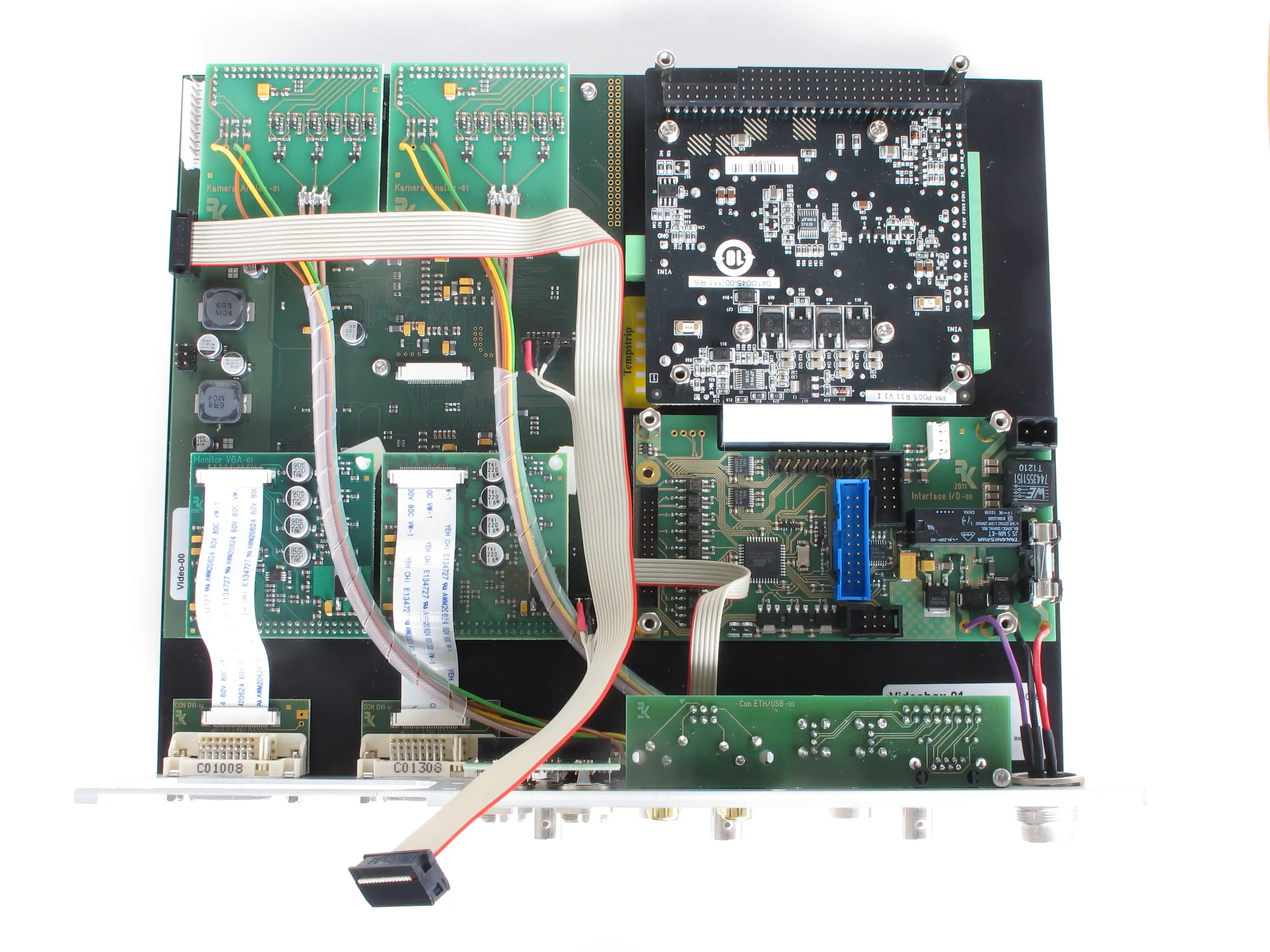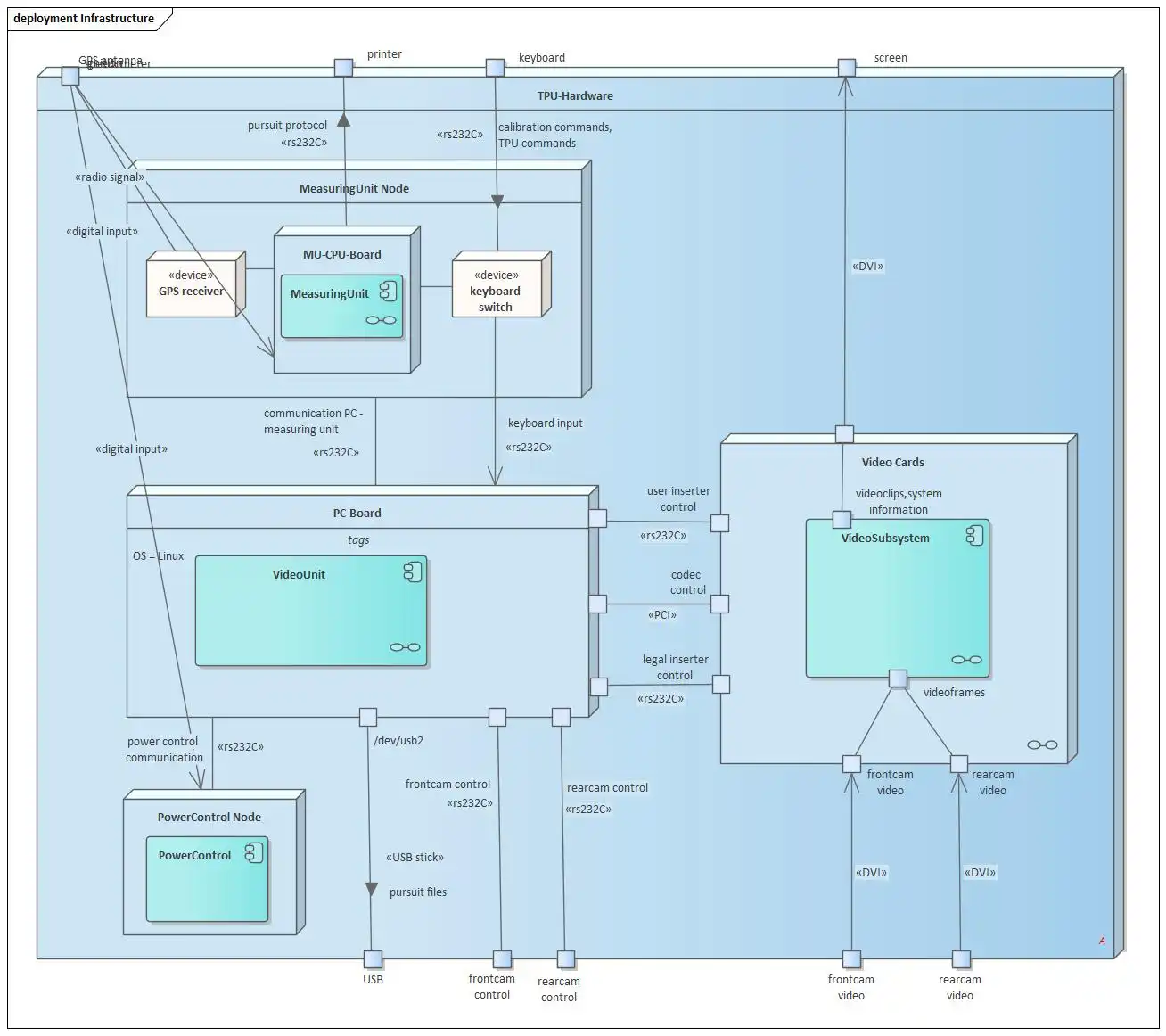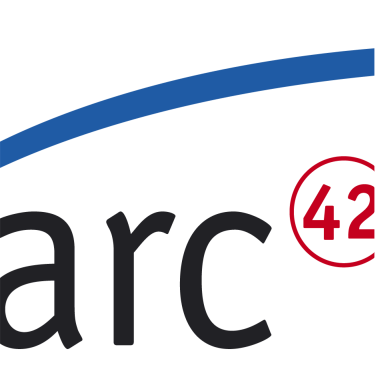The example shows an Enterprise Architect (TM) deployment diagram to show the processors used to implement the complete functionality of the Traffic Pursuit Unit. Note the design decisions (i.e. the technology) for the channels connecting the processors.
7.1 Deployment View Level 1 (Traffic Pursuit Unit)
The following picture shows the inside of the TPU hardware, an industrial rack with the main PC-board and several other Printed Circuit Boards (PCBs).

7.1 Deployment Level 1
The following UML diagram shows this hardware structure.

1. MeasuringUnit Node
This node mainly consists of a base PCB on which the MU-CPU-BOARD, the GPS Receiver module and the multiplexer are mounted.
MU-CPU-Board
- CPU: ARM processor 200 MIIPS at 180 Mhz
- multiple RS232 lines with speeds up to 115Kbaud
Keyboard Switch
forwards the keyboard input either to the MU-CPU-Board or the PC-board, depending on the operating mode of the MeasuringUnit. In stand-alone mode the user input is handled in the MeasuringUnit. In video-mode it is handled by the PC-Board.
GPS receiver
transforms the GPS antenna signal into location information forwarded to the MU-CPU-Board.
- binary SIRF protocol or NMEA protocol
2. PC-Board
is the central processoror of the TPU, mainly controlling all video functions of the system and storing relevant results.
- CPU: Intel CPU xx cores,
- running RT debian Linux
- multiple RS232 lines with speeds up to 115Kbaud
3. Video Cards
This node contains all hardware for video processing. Its details are described in the next chapter.
